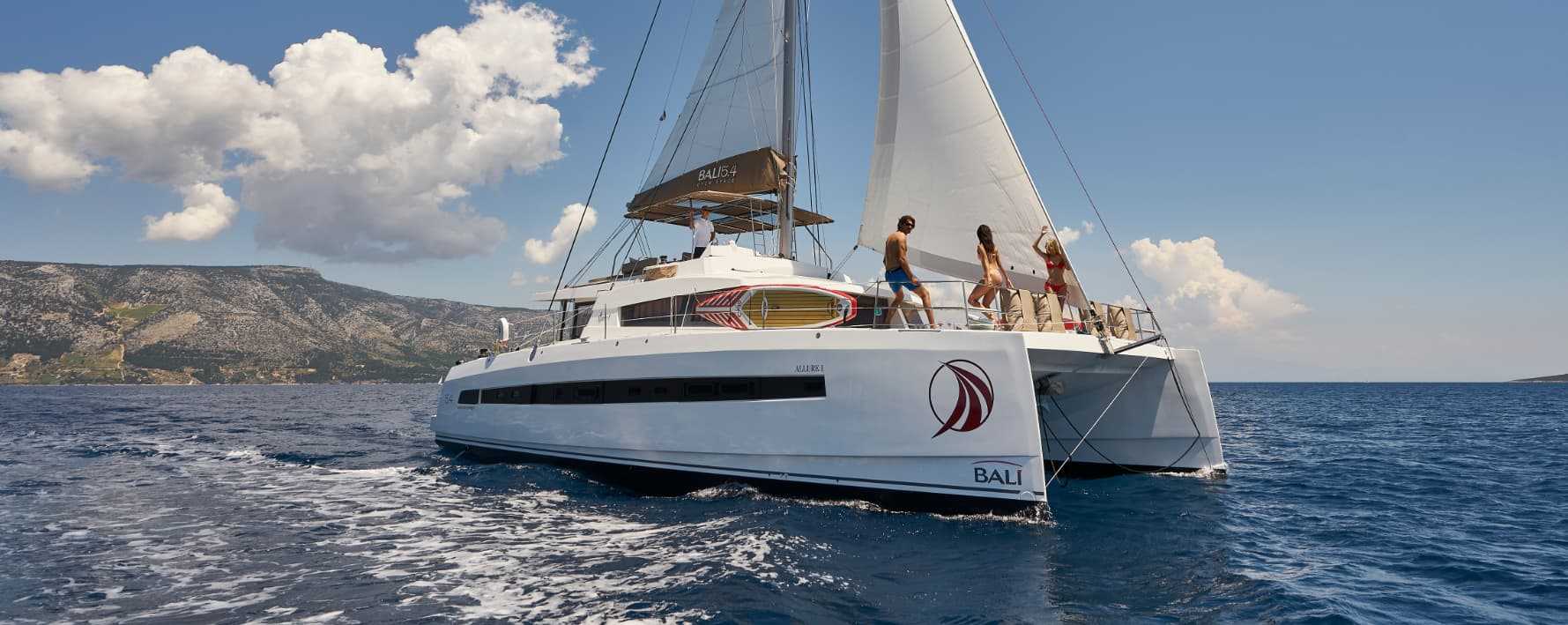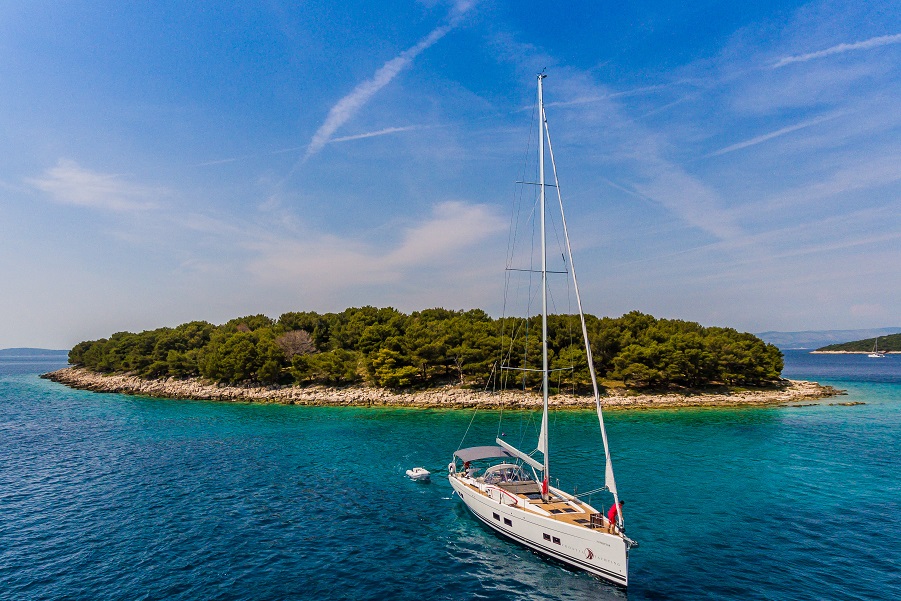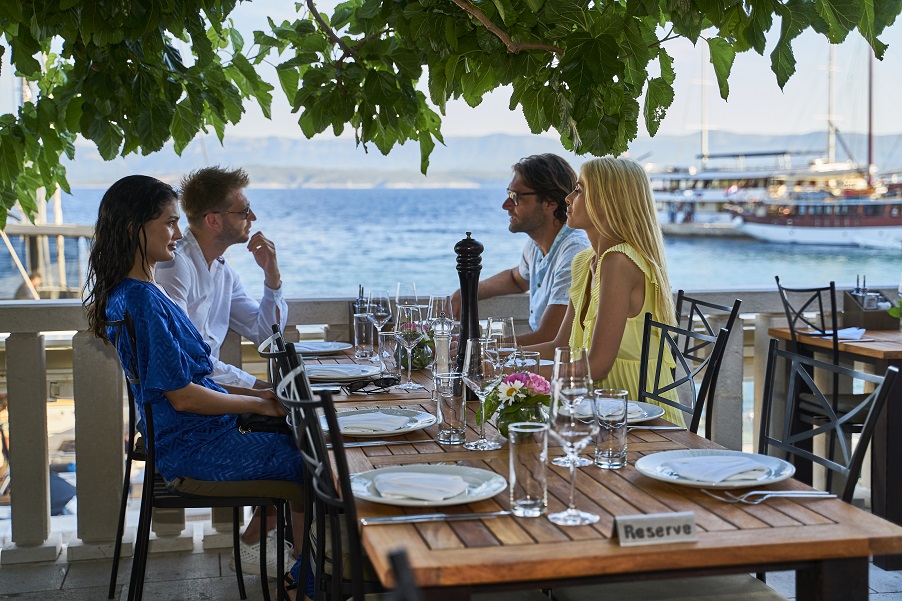Dalmatian White Wine Varieties: Pošip, Vugava, Grk, Debit

Dalmatia’s wine history can be traced back 2,500 years when Greek settlers pressed grapes into this famous juice on Korčula, Vis, and Hvar islands. With around 130 native varieties in the country today, it’s no surprise that this tradition has continued and is fostered by many guardians of the grape, no matter where in Croatia they are and no matter which variety is produced.
The region of Dalmatia is incredibly unique in Croatia’s wine history, not only because the original Zinfandel hails from these parts. But today, we’re talking about Dalmatian white wine varieties or those you’d choose to complement Adriatic cuisine on your next sailing holiday.
In a region where seafood is king, which of these Dalmatian white wine varieties will you pick to pair with your next meal?

Pošip
Dr. Marcel Jelaska from the Institute for Adriatic Cultures researched the origins of Pošip, which comes down to a 19th-century legend and goes a little like this. A wild vine was discovered in a forest with an excellent taste and unusual aroma. The vine was then planted in a nearby vineyard, multiplied, and ultimately given to winegrowers from Smokvica and Čara on Korčula Island. Until then, Pošip was grown, picked, and mixed with other white varieties, that is, until one winegrower from Smokvica endeavored to produce a smaller amount of wine only using Pošip grapes. After years of research and numerous experiments, agronomist Marcel Jelaska and oenologist Ljubo Rumora paved the way to protect the controlled origin of the variety by studying its position. Thus, in 1967, Pošip (from the 1965 vintage) was officially protected as the first top-quality white wine in Yugoslavia. Pošip is the first Croatian white wine with a protected geographical origin, and it is most abundant on the island of Korčula, in the Čara and Smokvica fields. However, it is also found on the neighboring islands and along the Dalmatian coast. Preserved as one of Croatia’s native grape varieties, Pošip is usually strong and full-bodied, with a characteristic aroma of dried apricots and figs. It ranges in color from greenish-yellow to yellow and leaves a thick mark inside the glass. A decadent display next to aromatic seafood dishes, Pošip is one of the most sought-after white wines in Croatia. You may know it best as Pošip Čara or have tasted it from the Grgić winery on Pelješac.
Wine is the most civilized thing in the world, said Ernest Hemingway- and in Dalmatia, it is a way of life.
Grk
While it is unknown whether it got its name due to its refined bitter taste or after the Greeks who settled on the island of Korčula at the beginning of the 3rd century BC, Grk is one of the most important white wine varieties in Croatia - and experts believe it should be given more attention. Grk is a white wine made from the native grape variety of the same name and thrives best in the sandy vineyards of the Lumbarda field on Korčula Island, where it was born. Grk is also closely related to Crlenjak or Tribidrag (which you may know better as Zinfandel), the parent of Plavac Mali.
Grk is a unique variety that cannot pollinate itself - but that’s not all. Grk is especially valuable because it grows in sandy soil, which is why part of the vines survived phylloxera, which ravaged Italian and French vineyards at the end of the 19th century, and Croatian vineyards at the beginning of the 20th. The consequences were especially terrible on the Dalmatian islands, forcing inhabitants engaged in winemaking to emigrate overseas. This was the end of Grk at the time, which was once among the leading white varieties in Dalmatia. Today, Grk has come back to life but only grows on less than 50 hectares. Boasting a rich viticultural tradition, modern technology, and oenology, Grk forms into a dry wine with a distinct personality, recognizable by its light greenish and yellow color with golden reflections, accentuated varietal aromas, and fragrances. It is characterized by a rich, harmonious, rounded taste with a slightly bitter finish. Grk prefers all fruits from the sea, especially oysters, while it also pairs well with white meat dishes and can also be served as an aperitif. You may recognize it best from the Bire and Zure wineries in Lumbarda.
Vugava
"On the island of Vis is a wine produced that no other wine equals.” Whether Greek historian and geographer Agatharchides was talking about Vugava, we’ll never really know, but after trying this wine, we can make an executive guess that he was. Vugava, also known as ‘Bugava’ if you’re a Vis local, is yet another cherished Dalmatian white wine variety, most widespread on Vis Island. One of the oldest indigenous grape varieties in Croatia, Vugava has been cultivated on the island since ancient times. Many consider that Vugava’s gene center is on Vis Island - but that doesn’t mean it can’t be found in other areas of Dalmatia. This premium white wine made from the highest-quality white grapes is traditionally grown on the sandy and stony Vis hills. This variety is also known to ripen early - and coupled with the relentlessly hot summers in Dalmatia, results in a wine with a high alcohol and sugar content yet low acidity. A full-bodied wine with pleasant fruit aromas, Vugava often reminds drinkers of overripe fruit. It is fresh and drinkable and pairs flawlessly with seafood, from shellfish and squid to shrimp and fish. It is most popularly drunk at Lipanović Winery on Vis or Stina Winery on Brač.
But this Dalmatian white wine variety has another trick up its sleeve. Namely, Vugava grapes are also used to make Dalmatian dessert wine prošek, traditionally produced by drying grapes in the Mediterranean sun. Perfectly paired with hard cheeses and dry cakes, it was also said to be the drink of choice by Roman Emperor Diocletian!

Debit
Debit is a native variety of Inland Dalmatia (Zagora) and Northern Dalmatia. The origin of the variety is intriguing, considering that ‘Debit’ refers to the Italian origin of the variety ‘Debito,’ or debt, which in turn refers to the exchange of goods or the use of Debit as currency in trade. Its Italian origins also come into play thanks to its other name, ‘Puljižinac’, which translates to ‘a person from Puglia’, but this is what we know today. The first written mention of Debit can be found in "Dalmatien in seinen verschiedenen Beziehungen" by Petter from 1857 under the synonym ‘Debich.’ The Economic Gazette also mentions that Debit was exhibited at the first Dalmatian economic and craft exhibition in Skradin in 1875. Wildly popular one hundred years ago, especially in 1932 when the Bedrica family’s Debit was one of the top six wines in Toulouse, France, Debit saw a significant decline until its rebirth in the 1990s after the Homeland War when residents returned to Inland Dalmatia. Today, Croatian winemakers have celebrated international awards for this particular wine, and it is the 10th variety in Croatia in distribution, grown on 372 hectares. Cultivated on the skeletal, drained soils of karst plains and mountain slopes and also recently in karst fields, Debit's vineyards are found halfway between the coast and the rugged hills on the border with Bosnia and Herzegovina. Debit is grown in the Promina and Drniš vineyards and often planted with Plavina and Lasina wine varieties, especially in inland Šibenik and the Skradin surroundings. These grapes ripen late thanks to hot September and warm October days, while cool nights and winds from Dinara provide it with nice acids. A late variety with high yields, Debit is a light, enjoyable wine with characteristic varietal aromas. It glows in gold and yellow and is often served next to young lamb, white fish, and other seafood dishes. Bibich Winery is undoubtedly the most popular Debit producer today.
















